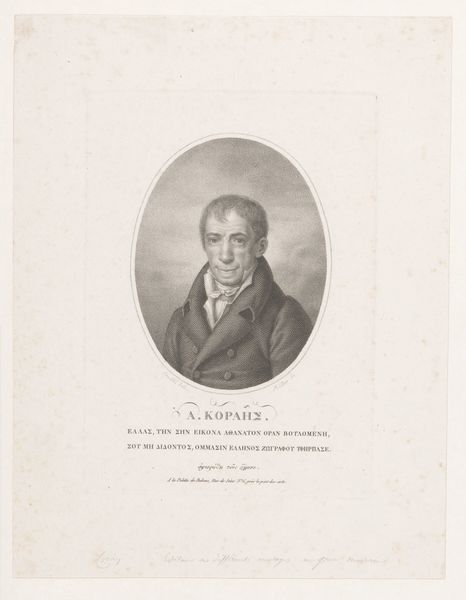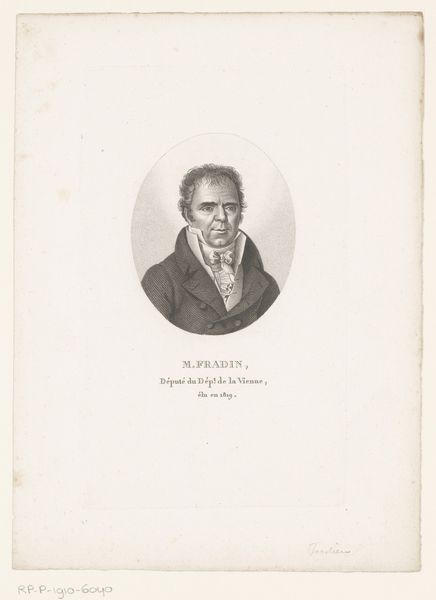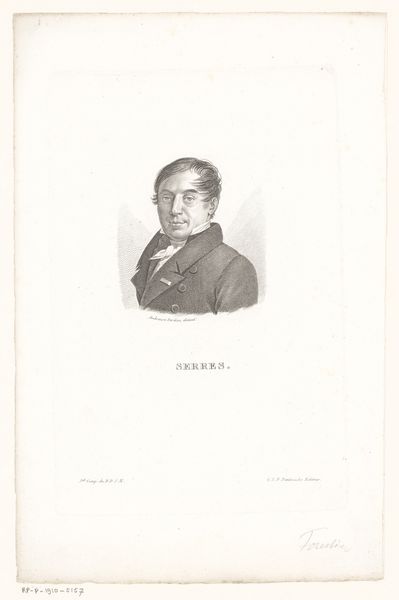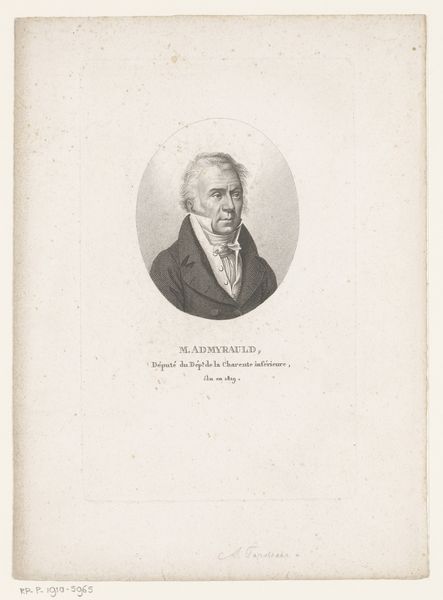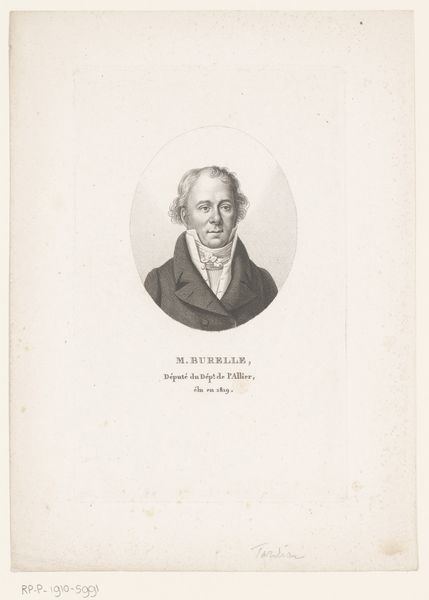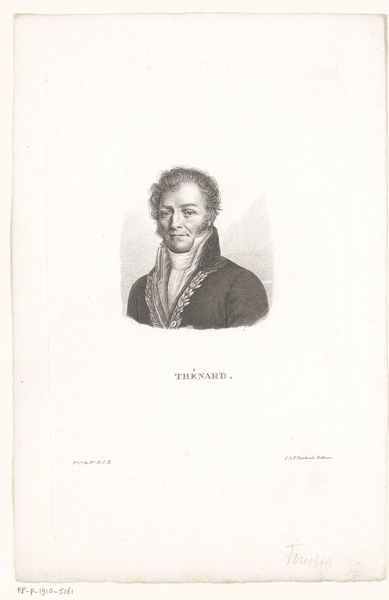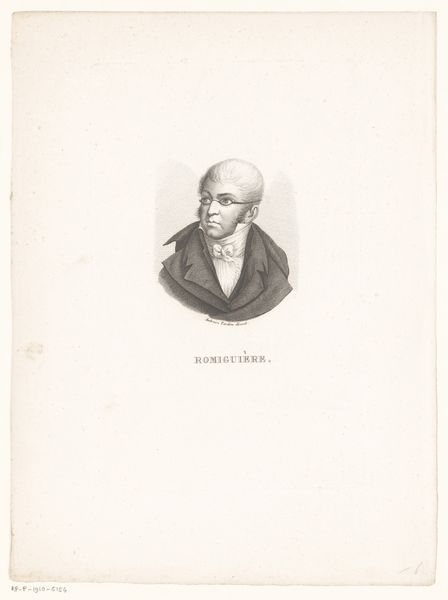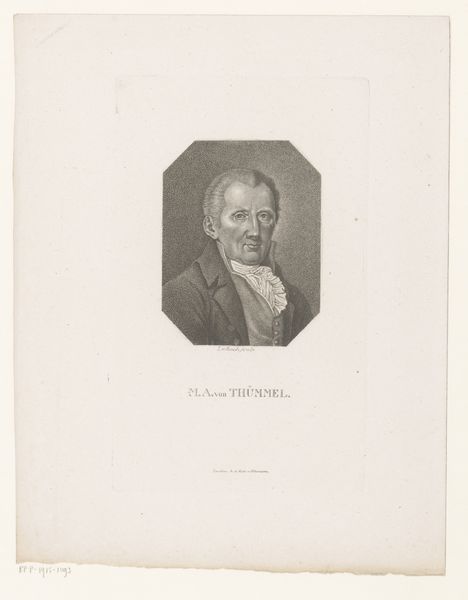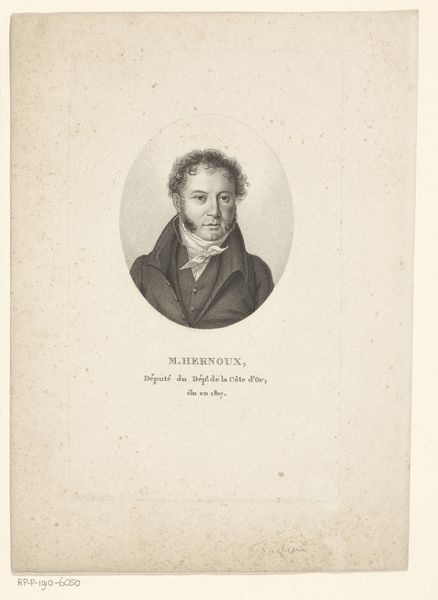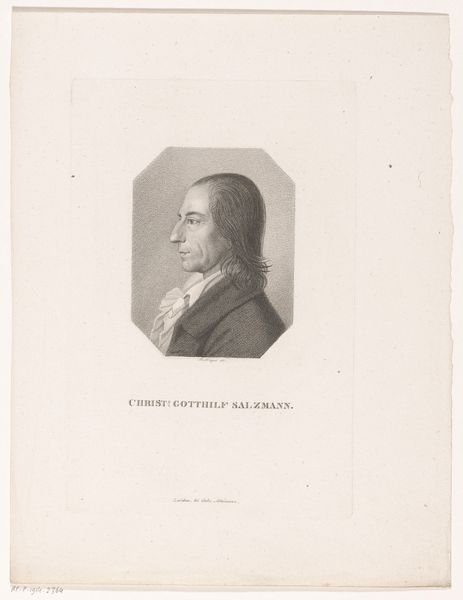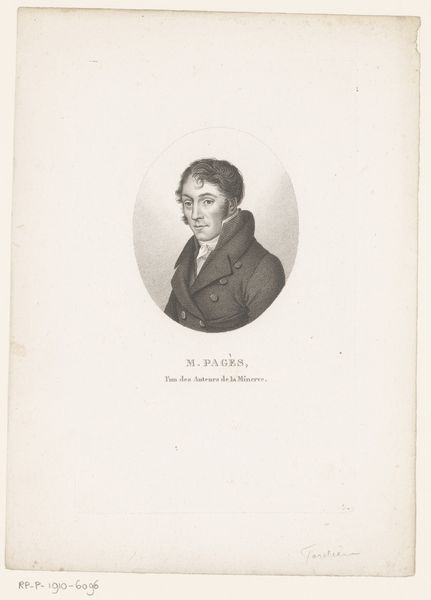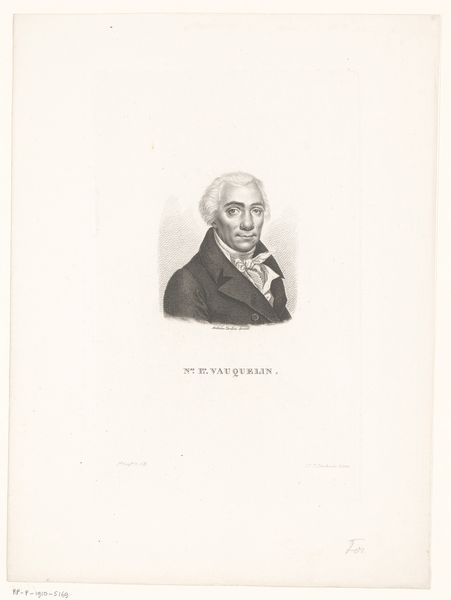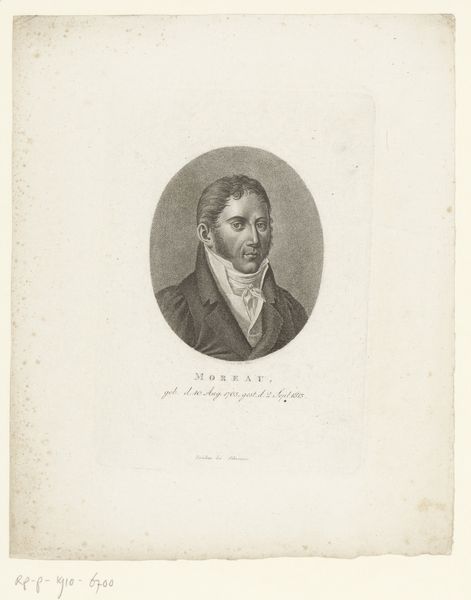
print, engraving
#
portrait
#
neoclacissism
# print
#
old engraving style
#
engraving
#
realism
Dimensions: height 225 mm, width 141 mm
Copyright: Rijks Museum: Open Domain
Curator: This engraving by Ambroise Tardieu, completed sometime between 1820 and 1821, offers a glimpse into the life of Charles Bernardin Beslay. Editor: My immediate reaction is of someone serious and formal. The stark contrasts within that oval frame give him a very defined and perhaps slightly stern presence. Curator: Well, within the historical context of the early 19th century, and framed by the dictates of Neoclassical portraiture, Beslay's representation carries political weight. He was, after all, a deputy, which brings into question ideas around civic duty and masculine identity at that time. Editor: It's hard to divorce an image like this from questions around representation, isn’t it? I mean, whose image gets circulated and canonized? Was this commissioned, or made after his death, and how would that matter? There is clearly an element of idealisation. Curator: Exactly. Considering this portrait within a larger network of prints during the period highlights the visual strategies used to construct political figures, especially following the turbulence of the French Revolution. Editor: There's an element of realism in how his face is etched, a slight puffiness around the eyes suggesting maybe it sought to capture a tangible individual. Curator: And beyond the aesthetic, thinking about the mechanics of distribution becomes crucial. Prints allowed for the dissemination of these ideals across broader audiences, reinforcing particular notions of power. Editor: Looking closer at how the piece seems to center masculinity and political identity helps reveal broader, intersectional discussions concerning class, race, and who had the privilege to take part in those roles. It gives us some food for thought to unpack the power structures at play. Curator: Yes, these are potent visual markers, a shorthand to communicate about political structures through the figure of Beslay. Editor: Reflecting on this, it has highlighted how artistic choices can have lasting effects, not just in aesthetics, but by shaping views of masculinity, society, and who is deserving of power. Curator: Indeed, looking at Tardieu's engraving with today’s critical framework can lead to so many different perceptions.
Comments
No comments
Be the first to comment and join the conversation on the ultimate creative platform.
